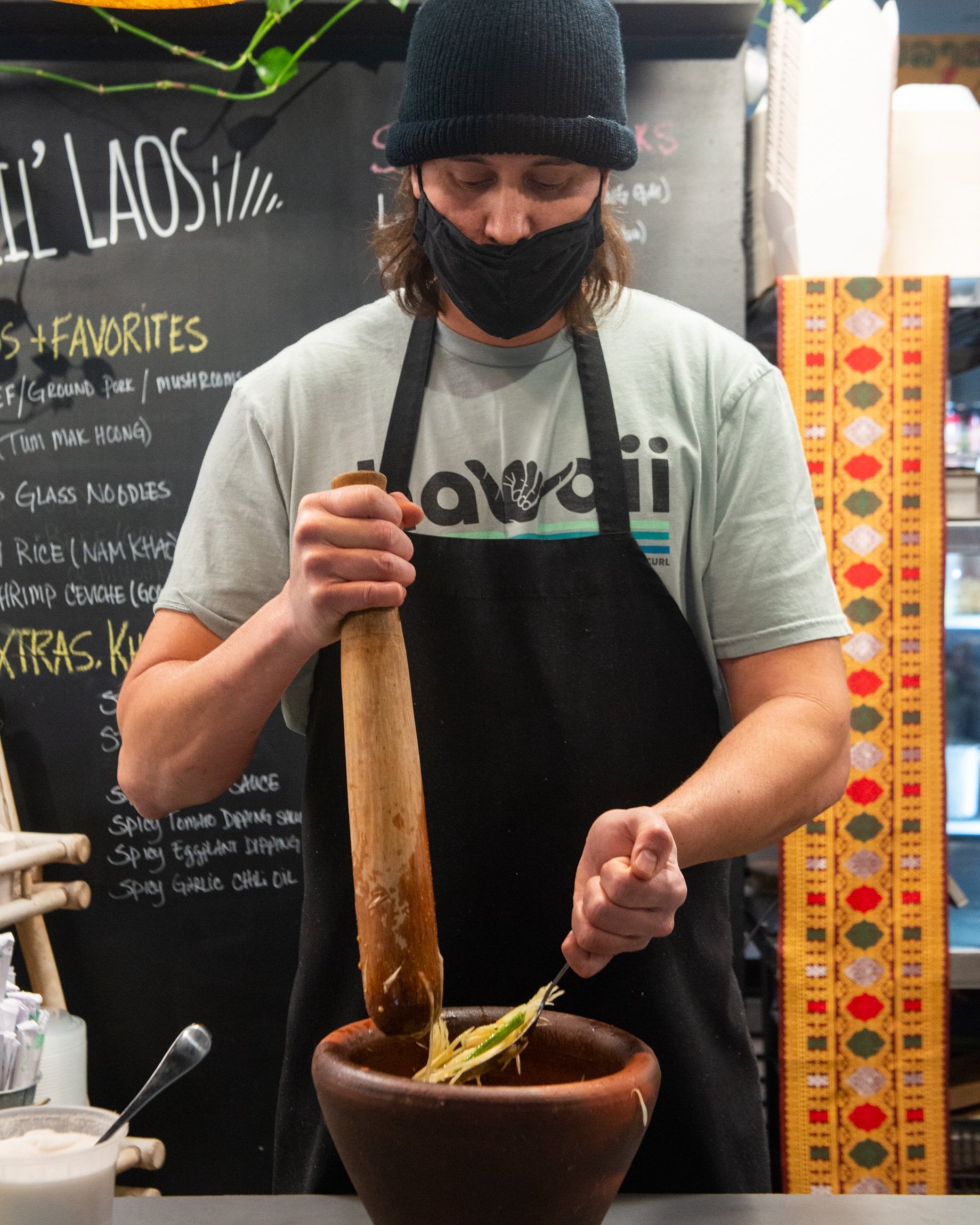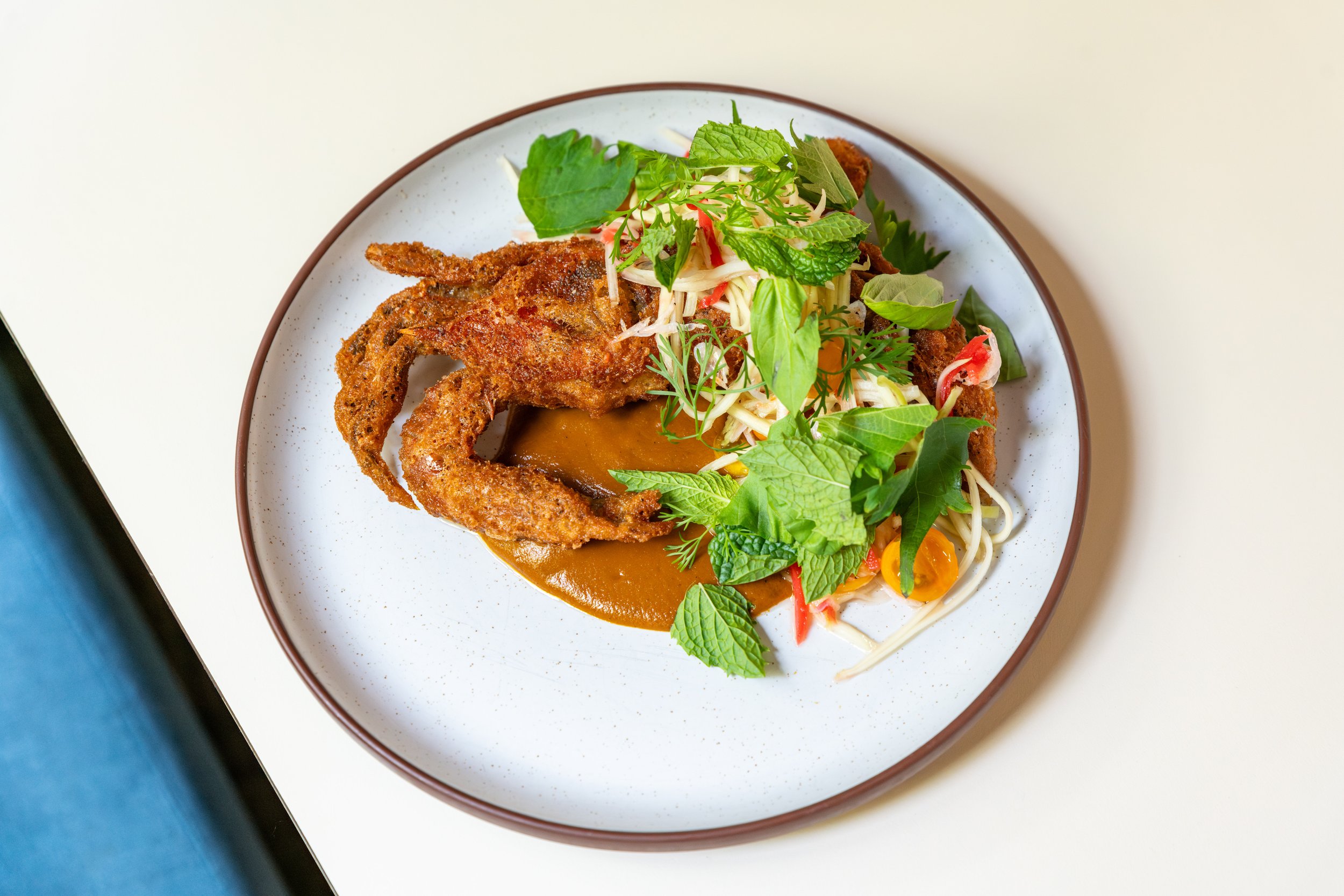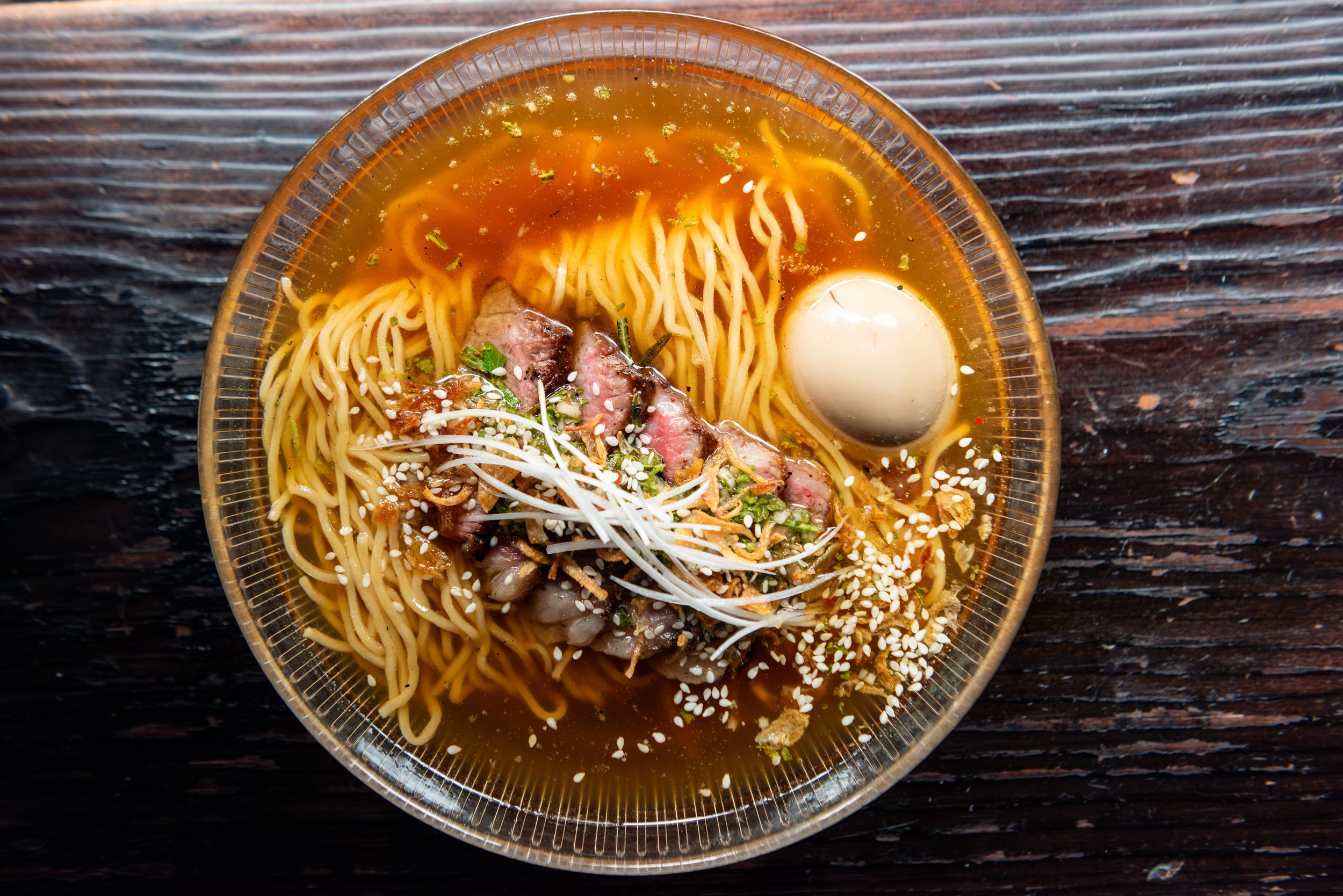From Laos with Love
At Lil' Laos in Miami, Sakhone Sayarath and Curtis Rhodes want Miami to experience Laotian cuisine and learn about it.
Sai Krog Muu: Sausage, Cabbage, Tamarind-Chile Sauce | Photos: will blunt
When Sakhone Sayarath misses home, she makes khao poon gai (shredded chicken noodle soup) like her mom’s. If the nostalgia is strong, she’ll also make sai krog muu (fermented rice and pork sausage) like her dad’s. At Lil’ Laos, a food stall by Sayarath and her life partner, Chef Curtis Rhodes, the street-food-style Laotian menu has both.
Until she turned eight, Sayarath lived in a refugee camp in Thailand, where resources were limited. But she has always cooked with her parents. “These are the foods that we were forced to eat and make and create ourselves,” she says.
When she met Rhodes in Miami, he was a sous chef at The Oceanaire Seafood Room. “He made cooking seem so simple,” she says. From friends to partners, they were always taste-testing each other’s cooking. As a professional chef, he journeyed into her food culture on dinners with her family. At home, she whipped up soups every day, and he helped her explore new cuisines.
What began as a pop-up in 2016 became a full-time venture during the pandemic. Sayarath took charge of soups and sauces at Lil’ Laos, while Rhodes was responsible for meat. “She gave me the foundation [for Laotian food],” he says.
Sayarath envisioned educating the public about the food’s origins as the flavors came together. “It is a blend of community, memories, and family,” she says. Lil’ Laos embraces eating in a family-style setting with your hands and letting nothing go to waste.
The sai krog muu on the Lil’ Laos menu is inspired by Sayarath’s father’s recipe, who would stuff sausages using a soda bottle and grill them outside. Her sausages missed the mark, so Rhodes used his own techniques with Sayarath’s palate guiding the taste. Their creative collaboration resulted in the salty, bold, and spicy flavors true to Laotian cuisine and reflective of a zero-waste ethos. “There's a common interest that we both have, which is to make good, simple, delicious food that people will love,” says Sayarath.
chef curtis rhodes of lil laos
Here’s the process behind the two main elements of their sausage: fermented rice and pork (full recipe here).
First, the sweet sticky rice is soaked for up to three days to ferment. For the sausage, Rhodes originally used pork belly for its fat content but then realized he could grind in the leftover fat he had from the pork shoulders or fatback.
Then, the ground pork is mixed with dill, cilantro, scallions, bird's eye chiles, garlic, shallots, makrut lime leaves, galanga, and fish sauce. After grinding a few more times, he adds the drained fermented rice, a binder that provides even more texture.
Finally, he stuffs the mixture into a casing to create a sausage full of fermented flavor. Lightly pan-seared, it’s finished in the oven at 525°F and served on a bed of shredded cabbage with a tamarind-chile sauce.








